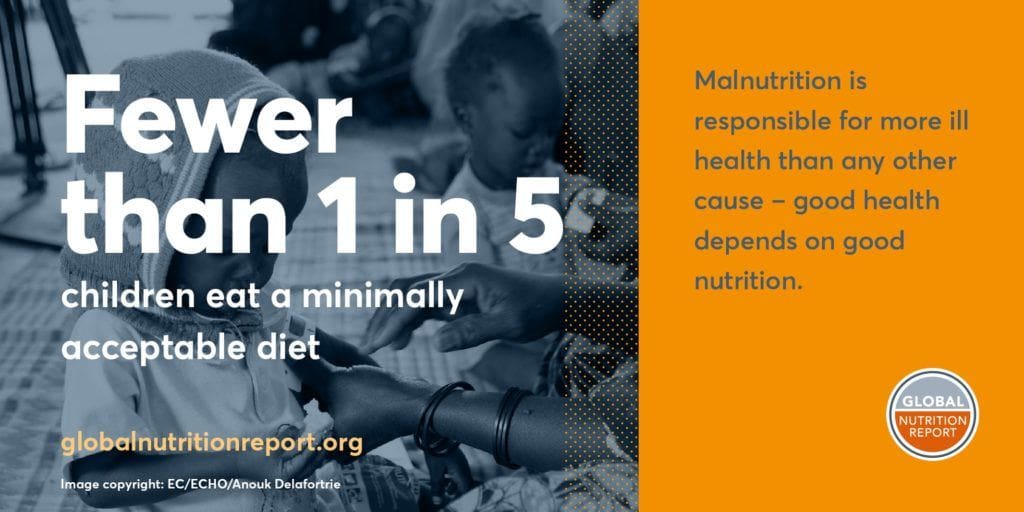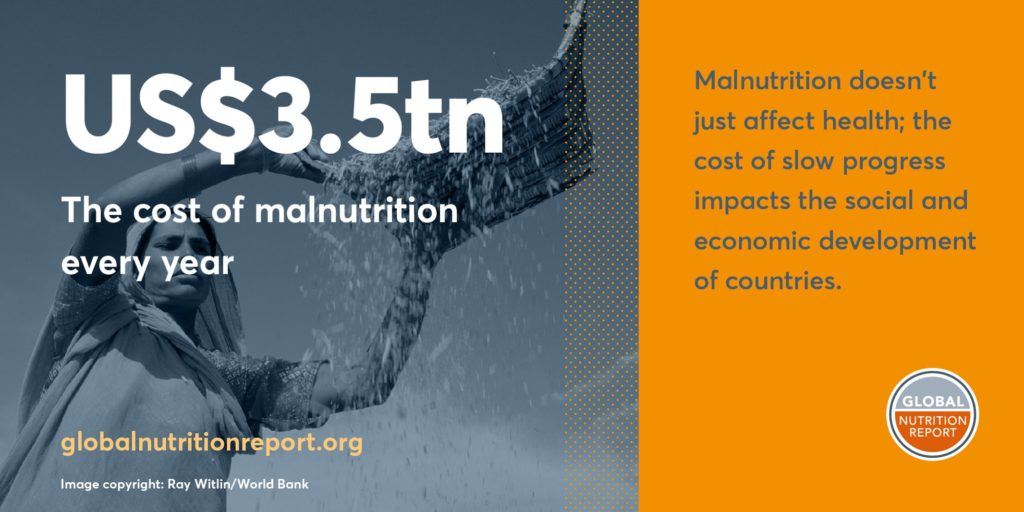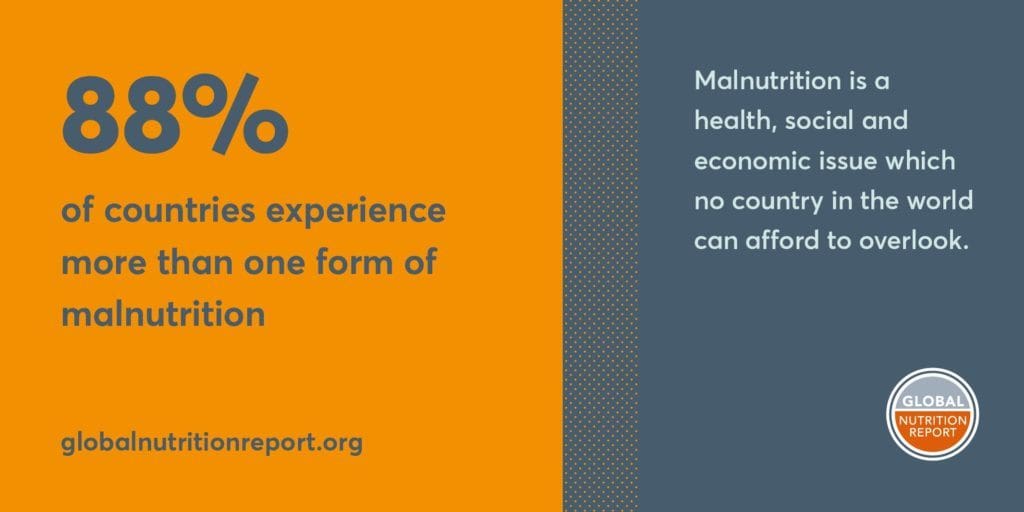
7 Things You Need to Know About the State of Global Nutrition
The annual Global Nutrition Report is the world’s most comprehensive report on nutrition, collecting data from 141 countries. The findings are sobering yet motivating: the scale of hunger is massive, but we have the tools to solve it. Here are the top seven things you need to know, including what WFP is doing about it.
Fact #1: Malnutrition is responsible for more ill health than any other cause in the world. Over the last year, WFP combatted malnutrition by providing assistance to more than 90 million vulnerable people across 83 countries.

Fact #2: Every year, 20 million babies are born underweight, and 200 million children under five years of age are either stunted or wasted. Meanwhile, 39 percent of all adults are overweight or obese. A significant number of WFP’s programs focus specifically on children, targeting the first 1,000 days from conception to a child’s second birthday, and then later through school meals. And, each year, WFP provides school meals to 25 million children across 63 countries, often in the hardest-to-reach areas.

Fact #3: Malnutrition costs society up to $3.5 trillion dollars a year. WFP works to reverse this effect, building communities that are more resilient and can sustain themselves. Through programs like Purchase for Progress (P4P) and the Farm to Market Alliance, small-scale and subsistence farmers can participate in local economies, earn an income and graduate from humanitarian assistance.

Fact #4: 1 in 3 women of reproductive age has anemia – a diet-related iron deficiency that can cause organ damage if left untreated. Last year, WFP provided specialized nutritional support to more than 4 million mothers. Every day, WFP distributes food rich in vital vitamins and minerals, including iron.

WFP/Saikat Mojumder
Fact #5: 88 percent of all countries experience more than one form of malnutrition, from overweight and obesity to undernutrition and underweight. On any given day, WFP has 5,000 trucks, 20 ships and 92 planes on the move, delivering food and other assistance to those who need it most.

Fact #6: Hunger isn’t caused by a shortage of food at the global level. WFP distributes nearly 4 million metric tons of food every year, a large part of which is purchased from developing countries. Buying food as close as possible to where it’s needed saves time and money on transport costs and helps sustain local economies.

WFP/Karel Prinsloo
Fact #7: Almost half the world’s population – 3.4 billion people – lives on less than $5.50 a day. At WFP, the average cost of providing a meal is just $0.36. So, for roughly the price of a pumpkin spice latte, you could provide 15 meals to someone in need.
Across the globe, there are stories of both strife and success, and it’s easy to feel overwhelmed by the magnitude of the challenge. But there are reasons to be hopeful, and the Global Nutrition Report is one step towards a solution. Its data shines a light on the steps needed to achieve the United Nations’ Sustainable Development Goal (SDG) of ending hunger by 2030, enabling hunger-fighting organizations like WFP to target resources more effectively. But WFP can’t do this life-saving work without support from readers like you. If you want to help, donate a meal today.




